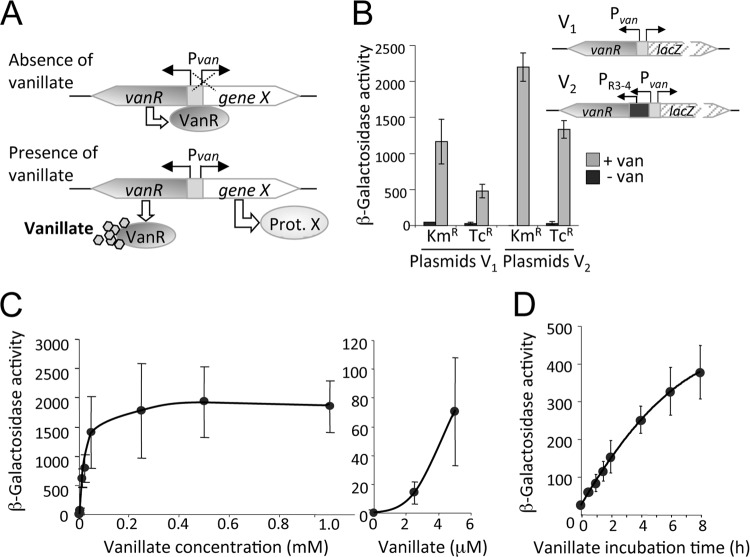Fig 3.
The vanillate-inducible gene expression system for M. xanthus. (A) Schematic showing how expression of a candidate gene (“gene X”), placed under the control of the vanillate promoter, Pvan, and located in the vanR-vanAB intergenic region, is turned off by the VanR repressor binding to its operator at Pvan in the absence of vanillate. VanR is transcribed constitutively and in the direction opposite to that of Pvan. Vanillate, when present, binds to VanR, preventing binding of its operator and allowing transcription of gene X from Pvan. (B) Expression of Pvan::lacZ with and without 0.5 mM vanillate after 15 to 20 h, shown in terms of the β-galactosidase-specific activity measured in three independent experiments. Plasmids V1 (pMR3564, Kmr; pMR3632, Tcr) contain only the vanR-vanAB intergenic region for vanR expression, while plasmids V2 (pMR3639, Kmr; pMR3638, Tcr) express vanR constitutively from PR3–4 (see the text). (C) Pvan::lacZ expression in the presence of vanillate at higher (left panel) or lower (right panel) concentrations for strain MR2469 (with PR3–4::vanR). (D) Time dependence of Pvan::lacZ expression in the presence of 0.5 mM vanillate for strain MR2453 (with PvanR::vanR). In panels B, C, and D, β-galactosidase-specific activities correspond to the means and standard deviations of the means (error bars) of the results of three independent measurements of samples collected from cultures with an OD550 of 0.9 to 1.1.

